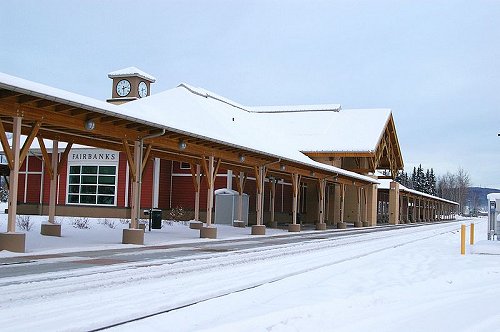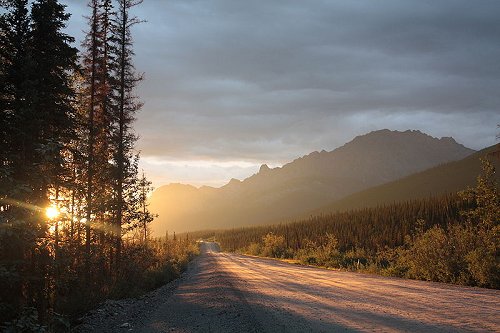 Fairbanks, Alaska
Fairbanks, AlaskaSource: https://commons.wikimedia.org/wiki/File:Downtown_Fairbanks,_Chena_River.jpg
Author: hikinghillman

Fairbanks is the second largest city in Alaska. Located in Fairbanks North Star Borough, it is also the largest city in the Interior region of the state. The city covers 32.7 sq mi (84.6 sq km) and has a population of around 35,500 people (2011 estimate), within a metropolitan area of around 100,000 people.
Fairbanks was founded by Captain E.T. Barnette in August, 1901. He had intended to reach the town of Tanacross, but ended up in the area when the steam boat he was on ran aground. Barnette eventually set up a trading post in the area, and named it after Charles Fairbanks, the Republican senator of Indiana and later a Vice President of the United States.
 Fairbanks Train Station
Fairbanks Train StationSource: https://commons.wikimedia.org/wiki/File:Fairbanks_AK_train_station.jpg
Author: Ron Reiring

Climate of Fairbanks
Fairbanks experiences subarctic climate. Its winters are bitterly cold while its summers are short and moderately warm. Winter in Fairbanks lasts from late September until early May. The first snow of winter usually falls around 21 September. The average winter low temperatures range from -15°F (-26°C) to -25°F (-32°C). Summer temperatures range from 50°F (10°C) to 70°F (21°C).Visiting Fairbanks, Alaska
Fairbanks International Airport is the main transportation hub for Fairbanks, with flights to towns in the interior of Alaska. It gets regular scheduled flights connecting it with Anchorage and Barrow. Dalton Highway, Alaska
Dalton Highway, AlaskaSource: https://commons.wikimedia.org/wiki/File:Sunrise_on_the_Dalton_in_Alaska.jpg
Author: Kelly

Places of Interest in Fairbanks, Alaska
- Chena Indian Village
- Creamer's Field
- El Dorado Gold Mine
- Ice Alaska
- University of Alaska Museum
 Latest updates on Penang Travel Tips
Latest updates on Penang Travel Tips

Copyright © 2003-2025 Timothy Tye. All Rights Reserved.

 Go Back
Go Back